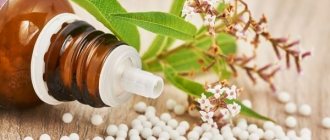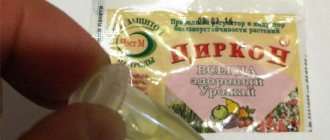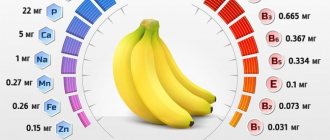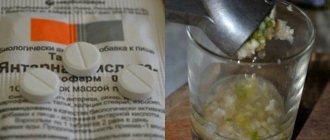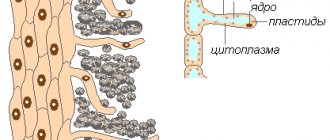There is a huge selection of plant growth stimulants on the market. But is it worth spending money on them? After all, everything you need to prepare medications can be found in almost every home!
Increasingly, summer residents are choosing safe natural remedies that do not harm the environment and the human body. Instead of chemical pesticides, herbicides and other drugs, folk remedies are used. Of course, they are slightly less efficient than industrial ones, but there is no doubt about their environmental friendliness.
Sometimes there is a need to stimulate plant growth, for example, to accelerate seed germination, root formation, prevent the falling of flowers and ovaries, accelerate the ripening of fruits, etc.
- We understand plant growth stimulants and regulators
Do you know how plant growth stimulants and regulators work?
And in this case, you can also do without store-bought drugs and prepare simple and effective plant growth stimulants from what you have on hand. So, let's share the recipes for these remedies!
Aloe growth stimulator
Aloe juice is a real elixir of life! If you have this plant (and it is at least 3 years old), try making a growth stimulator. Cut a few large leaves from the bottom of the aloe stems, wash and refrigerate for a couple of hours.
The older the aloe leaves, the more nutrients they contain.
Then grind the leaves to a mushy state, add 1 tbsp. the resulting mass into a liter jar and fill with a glass of water. Leave to infuse for 7 days in a dark and cool place, and then bring the infusion to 5 liters by adding boiled water at room temperature.
The finished preparation can be used for treating seeds and rooting cuttings, watering at the root.
Fresh aloe juice can, on the contrary, slow down plant growth.
Which auxins are best for plant root growth?
Heteroauxin
The basis of Heteroauxin includes the following active ingredients: indolyl-3-acetic acid, potassium salt. Indolylacetic acid is obtained from cultures of beneficial molds.
Application and dosage:
- The roots of vegetable and annual flower crops are dipped in the solution before planting. Dosage - 2 grams per 5 liters of water (5 liters of solution is enough for 100 plants).
- When grafting grapes, prepare a solution - 20 g per 1 liter of water. The scion must be dipped and held in the solution for 2 seconds.
- When transplanting seedlings and seedlings, you need to dip the roots in a solution - 10 g per 10 liters of water. After 5 days, water the seedlings with the same solution.
- When cutting all types of crops, semi-lignified cuttings must be soaked in the prepared preparation for 10-16 hours, and green cuttings of roses - for 16 hours. Solution: 4 g per 1 liter of water.
- Before planting, soak the bulbs and tubers for 16-20 hours in a solution - 2 g per 1 liter.
Kornevin and rooter
Kornevin is used most often. The powder is used to pollinate wet sections of cuttings during cuttings, 10 g per cutting. You can soak the cuttings for 6 hours before planting, preparing a solution of 1 g per liter.
After 10 days, each plant should be watered with 50 ml.
Rooter
Before planting, soak the roots of the seedlings for 6 hours in a rooting agent - 1 g per liter. After 10 days, water at the root. The amount of watering solution is taken based on the age and size of the plant.
Growth stimulator from nettle
Nettle is rich in vitamins and microelements, which have a beneficial effect on the growth and development of plants. It is especially good as a root formation stimulator, but is often used as a top dressing or as a pest repellent.
To prepare a growth stimulator from nettles, cut 6-10 strong and healthy plants, chop them into a bucket and fill with warm water.
Collect nettles before flowering and seed formation. Or trim the inflorescences before work.
Cover the bucket with a lid, a board or wrap it in burlap and place it in a warm place for 7-14 days. To speed up fermentation, place the container in the sun or add yeast (10 g). Stir the infusion daily with a stick. If an unpleasant odor bothers you, throw a handful of ash into a bucket or add valerian root tincture (10 ml). Afterwards, strain the infusion and dilute it in a ratio of 1:10. Water the plants at the roots every 7 days. For the procedure, use only fresh preparation.
- Nettle infusion - step-by-step master class with photos and preparation secrets
We show you how to prepare the right nettle infusion for feeding plants and spraying against pests.
Brassinolides.
Supports the normal functioning of the plant immune system. Increases resistance to disease. They also regulate the ripening processes of fruits and seeds.
Epin-Extra.
Anti-stress drug. Belongs to the group of brassinolides. These are hormones that maintain the normal immune system of plants. Especially in stressful situations such as low temperatures, frost, flooding, drought, disease, pesticides, soil salinity.
Brassinolides are contained in every plant cell, but their natural level in a changed environmental situation is often not high enough to maintain immunity and normal development of the plant throughout the growing season.
Small clarification. Due to widespread counterfeiting, the drug called “Epin” was discontinued back in 2003. And it was replaced by an improved substitute, Epin-Extra. Having a high degree of protection against counterfeiting, as it was patented and registered in accordance with the law of the Russian Federation.
Seeds treated with epin germinate faster, and seedlings obtained from such seeds are immune to many common diseases. Such as blackleg, late blight, rhizoctonia, powdery mildew. In addition, plants become more resistant to weather changes and even to such unfavorable phenomena as drought, frost, and chemical soil pollution.
It is also important that the products grown are of high quality and have a reduced content of heavy metals, nitrates, and residual pesticides. It has also been established that the drug has an activating effect on the shoot formation of fruit and berry crops, grapes, flowers, and ornamental shrubs.
The use of epin.
To prepare the solution, shake the package removed from the refrigerator and warm it for 30 minutes at room temperature or 2-3 minutes in your hand. As a result, the precipitate disappears and the contents of the test tube become transparent.
Shake the test tube vigorously several times. Epine treatment is always carried out after seed disinfection. For example, warming up in hot (+50-52 degrees) water for 20-25 minutes, then in cold water for 3 minutes.
But here you need to remember that after treatment with hot water, 20-30% of the seeds may lose their viability. That is, weak seeds will die.
The seeds of most vegetable crops are soaked at the rate of 3-6 drops per 50 ml of warm boiled water. For soaking tubers and bulbs - 1 ampoule per 2 liters of water. Soak seeds, tubers, and bulbs in Epine solution for 18-24 hours. After this, the seeds are either dried and sown, or put in melt water to germinate.
Silk.
Natural fungicide and growth stimulator. Increases the yield of vegetable crops by 25-30%. Helps increase the vitality of plants in extreme climatic conditions (drought, frost). Reduces the incidence of plant diseases such as late blight, downy mildew, brown rust, root rot, wilt, and bacterial black spot.
Thanks to the pine needles included in the composition, the drug has a pleasant smell. It dissolves instantly in water and retains its properties for a long time. Pine needle extract has a stimulating effect on the plant’s immune system and improves its protective qualities.
Silk is used on tomatoes, cucumbers, cabbage, onions, and potatoes.
Silk must be dissolved in 100-200 ml of water. The water temperature should be 35-60 degrees. The concentration of the composition depends on what crop you will process. It will take 10-15 minutes to dissolve the composition.
The drug can be used in two ways:
- Soaking seeds. Planting material must be placed in the prepared working composition for 2 hours. After the procedure, you should wait until the seeds dry completely. You can use a simpler method - spray the seeds with the mixture and let them dry;
- Spraying. Apply the composition to the leaf part, flowers and ovaries using a sprayer. The procedure is carried out during the growing season of plants.
Zircon.
Plant growth and development regulator, root former, flowering inducer. Derived from plant materials. Increases germination and germination energy of seeds. Accelerates flowering, growth and development of plants by 5-10 days. Ripening time is reduced by 1-2 weeks. Productivity increases by 35-60%.
As a result, the use of zircon sharply reduces the degree of damage to diseases such as late blight of potatoes and tomatoes, peronosporosis of cucumbers, scab of potatoes and apple trees, bacteriosis and fusarium of vegetable and flower crops, gray rot of strawberries, and especially powdery mildew of black currants.
Has high root-forming activity. Promotes rooting of seedlings and cuttings. Accelerates their survival rate during transplantation and reduces the accumulation of heavy metals.
For pepper seeds, excellent results are obtained by 16-18 hour treatment at a temperature of 23-25 degrees and when diluting zircon - 1 drop per 300 ml. water. For corn, cucumber and pumpkin seeds – 2 drops per 300 ml. and 10 hours of processing.
Growth stimulator from onion peels
Preparing a growth stimulator from onion peels is as easy as shelling pears, and the effect will not be long in coming. Pour two full handfuls of husks into 1 liter of boiling water, add 1 tsp. wood ash, mix and leave for 2-3 days. Then strain the infusion and dilute in a ratio of 1:3. It is useful to water planted seeds or seedlings with this infusion.
Onion peels not only stimulate plant growth, but also strengthen their immunity and help reduce the number of fungi and pathogenic bacteria in the soil. In terms of the amount of nutrients, it is not inferior to other folk remedies. It contains vitamins A, C, PP, group B, potassium, phosphorus, iron, etc.
Stimulators of seed germination and fruiting: gibberellins
Gibberellins are growth stimulants for all plants. The drugs are used to ensure that seeds germinate faster, flower crops bloom more luxuriantly, and fruit crops develop fruits at a rapid pace.
That is, the use of Gibberellins leads to an increase in productivity and the removal of tubers and bulbs from dormancy. In addition, they accumulate useful substances in plants.
Gibberellin
Gibberellin is a phytohormone necessary to obtain a significant harvest of berries, vegetables, and fruits. Phytohormones are able to awaken plants so that they begin to grow.
Specific effects of phytohormone to stimulate growth:
- Leads to an increase in the embryo in the fruit.
- Enhances the growth of the above-ground parts of plants;
- Activates the growth of the stem, as well as the development of the entire aerial part;
- Produces cell division, which enhances tissue proliferation;
- Helps plants enter the flowering phase;
- Seeds begin to hatch and grow faster;
- All processes inherent in the growth process begin to “set into motion” faster.
Gibbersib
Gibbersib is a natural growth regulator that promotes rapid plant development.
The listed advantages of the product will prompt gardeners to purchase it to accelerate the growth and ripening of fruits:
- Activates the growth of all garden and vegetable plantings, regulates metabolic processes;
- Helps nutrients to be distributed throughout all parts of the seedling;
- Increases immunity, which helps resist the attacks of fungal and other diseases, develops resistance to adverse weather conditions;
- Safe for people, all living organisms and the environment;
- Does not affect the taste and color of fruits;
- Stops the “aging” of fruits and foliage.
To spray crops on leaves or to soak tubers, you need to dilute 1 g in 10 liters of water. To treat grapes, you need to mix 1 g of the product with 3 liters of water. For soaking seeds 1 g per liter of water.
During the flowering phase, you can spray 2-3 times to increase yield and reduce ripening time. It has been noticed that if the apple tree is sprayed 2-3 times during flowering, the yield will increase by 20%.
If rust appears on the foliage, then “Gibbersib” will cope with this problem. The drug has analogues: “Bud”, “Ovary”, “Fruit”.
Growth stimulator from egg whites
Do your plants look bad and grow slowly? An egg growth stimulator will come to the rescue! Stir 2 egg whites in 200 ml warm water and let them sit for a week. Then dilute the resulting product in a ratio of 1:10 and water the plants. The effect will not take long to arrive! The infusion is especially suitable for indoor plants, which literally come to life after watering.
The smell from the infusion will be unpleasant, so it is better to prepare the product in a well-ventilated area.
Why are biostimulants needed?
After treatment with growth stimulants, seedlings appear faster.
Do not confuse growth stimulants for indoor plants with fertilizers, fertilizers and medications. This is not at all a panacea for all problems that may periodically arise in home floriculture. Such products can improve the appearance of plants in pots. But pests and diseases will not get rid of and will not replace comprehensive systematic care.
Phytohormones for plants have the following effects:
- accelerate seed germination;
- help cuttings take root better and faster;
- promote the formation of the ovary;
- increase and maintain plant immunity;
- protect against temperature changes when seasons change.
But this effect can only be achieved if used correctly. It makes no sense to use immunomodulators if a houseplant is flooded with water or, conversely, suffers from infrequent watering. If the flower pot is on a cold windowsill or in a draft.
Likewise, biostimulants do not protect against diseases and insects. They can only help to endure the lesions more easily, provided that the owners take care of eliminating the problem and preventing its recurrence.
Willow growth stimulator
It turns out that willow can also speed up the root formation of plants, so many summer residents successfully use it as a stimulant. The product is prepared according to this recipe: cut young shoots of willow and place in a container with water. When they take root and the water turns dark, remove the shoots and soak the seeds in the same container or place plant cuttings in it. If the liquid thickens, dilute it with water in a 1:1 ratio.
Do not throw away the willow shoots, but put them back in water. This will give you another dose of plant growth stimulator.
Plant growth regulators
Plant growth regulators do not speed up growth, but help some parts of the seedling begin to develop faster than others. This is especially important for seedlings so that they do not overgrow.
Athlete
The athlete regulates the growth of seedlings. The drug prevents it from overgrowing and stretching out. By using this product according to the instructions, you will get thick stems of seedlings and wide leaves. Because the bulk of the nutrients will go to the roots.
Once saturated, the roots will begin to nourish the entire plant, causing the seedlings to bloom faster and then produce a bountiful harvest.
Kultar
To ensure that the growing season of plants proceeds without problems, it is recommended to spray the seedlings twice a season with Kultar. The first treatment is a month after the start of flowering, then repeat after three weeks.
What will treatment with Kultar give?
- Fruit buds will form quickly.
- The shoots will grow more slowly, reducing the need for pruning.
- Resistance will increase not only to powdery mildew and scab, but also to other diseases.
Tur, chlorocholine chloride or CCC
TUR, Chlorocholine Chloride, or CCC inhibits plant growth. This drug is used for crops that are grown in pots and containers.
Alar
Alar is most often used to treat pome crops to prevent premature fruit drop of apple and pear trees.
The garden is treated 2–4 weeks after flowering. Spraying leads to inhibition of shoot growth, but rapid formation of flower buds occurs. Under the influence of Alar, young trees quickly begin to bear fruit.
Yeast growth stimulator
Yeast promotes the growth of green mass, significantly accelerates the growth of plants, increases their immunity and endurance. After using the product, the root system receives a strong impetus to development. Yeasts also benefit the soil microflora.
To speed up seed germination , dilute 20-30 g of fresh yeast in 0.5 liters of warm water. Then soak gauze in the solution, wrap the seeds in it, place it in a bag with holes and leave it in a warm place. When the seeds swell, sow them in containers or open ground.
To stimulate root formation , dissolve 60-70 g of fresh yeast in 0.5 liters of warm water. Place the cuttings in the solution for 2 days, then change it to plain water and leave the plants in it until the roots sprout.
To water plants at the root, pour 100 g of yeast into 10 liters of water, add 2 tbsp. sugar and leave for a day. Dilute the finished product in a ratio of 1:5.
Use yeast only in warm soil, otherwise it will be inactive. Two waterings per season are enough: when planting seedlings and two weeks after it.
- How to properly use yeast for feeding and protecting plants
Proper feeding with yeast: everything you wanted to know.
- How to feed yeast to plants in the garden, vegetable garden and flower garden
Do you use yeast supplements? If not, we are ready to share with you interesting recipes and rates for applying this natural fertilizer.
What are stimulants used for?
To choose a growth stimulant, you need to get acquainted with drugs that have been invented recently and those that have been used for a long time.
What happens to plants after using growth stimulants:
- Root growth accelerates;
- Accelerated formation of lateral root processes occurs;
- Rapid establishment of seedlings and seedlings of all plant crops;
- In a short time, the planting material takes root;
- Reducing stress when planting seedlings and replanting all crops.
Growth stimulator from dried mushrooms
You can even make an excellent growth stimulator from dried mushrooms, which contain a whole range of nutrients! After treatment, the seeds germinate faster and the seedlings become stronger. The recipe is this: 100 g of dried mushrooms, pour 1 liter of boiling water. Let stand until completely cool, strain and use as directed.
- How to dry mushrooms at home - the secrets of proper drying
To prepare aromatic soups, salads, fillings for pies or dumplings, be sure to dry the mushrooms!
When are biostimulants needed?
It cannot be said that the use of these products is mandatory in the list of regular procedures for caring for indoor plants. Each gardener decides for himself whether he needs it or not. If biostimulants are not introduced, the plants also feel great; moreover, if the drug is incorrectly selected and administered, they will feel worse.
Therefore, if you have already decided to support the plants in the house with phytohormones, they must be used strictly according to the instructions, in no case violating the dosage and frequency of fertilizing. For preventive purposes, experienced people recommend using Epin. It has a milder effect and is well tolerated by almost all cultures.
If the plant is already withering, suffering from diseases and pests, then it is better to switch to Zircon. It can also be used as a good analogue of "Epin", the code for the latter was not found on sale, but the plant needs to be supported.
Experts also recommend that you definitely purchase one of the products listed above if an exotic newcomer appears in your home garden. Tropical plants have a hard time establishing themselves in harsher climates. Of course, they will need feeding.
Growth stimulator based on kombucha
The world-famous kombucha is beneficial not only for the human body, but also for plant health. If you have this unique product, prepare a growth stimulator based on it. To do this, dissolve 200 g of mushroom infusion in 1.5 liters of water and soak the seeds in the solution for several hours or use it to water plants at the root.
Kombucha can also be used to combat late blight. Pour 50 g of black and green tea into a metal basin, add 0.5 cups of sugar, pour in 5 liters of water and boil for 10-15 minutes. Strain the cooled solution, put a plate of kombucha in it, and cover with gauze. Let it brew for 15 days in a dark place. After this, pour the infusion into a bucket, add water to 10 liters and spray the tomato bushes. Consumption per hundred square meters - 5-6 liters.
Mineral fertilizers used to water flowers for abundant growth
They contain many macroelements: nitrogen, iron, phosphorus, potassium, manganese, sulfur and others. All these substances strengthen the root system of plants, increase the plant’s immunity, ensure full development and rapid growth:
- Flower fertilizer with microelements. This is a concentrated fertilizer with humates and microelements. Restores the soil and improves plant immunity. During the active growing season, apply once a week, and in winter - once a month.
| Recipe. Root feeding. Be sure to shake before use. Dilute 5 ml of concentrate in 1.5 liters of water. Watering abundantly. |
- Universal complex fertilizer “Flower Paradise”. Often found in stores. It is concentrated and fast-acting. It contains a set of microelements that promote rapid growth. We take 10 ml of this fertilizer per liter of water. With each watering it is necessary to reduce the concentration of fertilizer. Overfeeding plants is also harmful. Plants are watered at the root - no more than once a month.
- Complex concentrated liquid fertilizer from Agricola for decorative deciduous plants. Designed for non-flowering plants. Plants begin to grow strong and bright leaves, which increases their decorative appearance. Contains macro- and microelements, as well as a growth stimulator. You will need 10 ml of solution per liter of water. You can feed every 7-10 days at the root.
Now you know how to water indoor flowers for rapid growth. Follow our recommendations and enjoy healthy, beautiful plants!
_____________________________________________________________________ Read our other articles about indoor plants: Lunar calendar for planting and replanting flowers for a year Watering indoor flowers for lush flowering: choosing folk remedies and mineral fertilizers The most suitable flowers for a school office: photos, names and descriptions Arranging a winter garden for beauty and health _______________________________________________________________________________ A What do you feed your pets for active growth? Share your experiences and tips with other gardeners in the comments.
How to improve clay soil?
The main reason for problems with creating a garden on loamy soils is their too compact structure, which negatively affects the development of vegetation.
The main problems associated with this type of land include:
- it is difficult to get rid of large amounts of water with limited access to oxygen, which contributes to root rot;
- slow heating of the earth, which is the main cause of delays in plant development;
- the formation of a hard shell under the influence of the sun, which, when ruptured, damages the roots of plants;
- too high viscosity of the earth due to moisture.
In turn, among the advantages of this type of soil, it is mentioned that nutrients:
- connected to each other by crushed particles;
- under the influence of water they are not washed into the soil, so plant roots have constant access to them.
To improve clay soil, the first step is to treat it to loosen the structure of the substrate. Then rotting and mechanical damage to the roots will not occur.
Green fertilizer - in the case of a clay substrate, sowing phacelia, lupine or lupine mixed with field peel is best. The roots of these plants overwhelm the soil, making its structure loose.
Mix coarse sand or fine gravel or granules with manure or compost (brown coal waste) - thanks to this you will not only improve the structure of the earth, but also add all the necessary micro- and macroelements.
What to do if your garden soil is too acidic?
Too acidic soil is the bane of many gardeners. This leads to the fact that chemicals are harmful to the plants in the substrate, and some beneficial microelements are lost, which means that the development of ornamental flowers and shrubs is limited or even impossible.
It is true that there are plants for which acidic garden soil is the optimal environment, but most require a neutral or slightly acidic pH of 6.0-7.0. Therefore, if we want to enjoy a beautiful garden, we must solve this problem.
The solution is simple. In early spring or autumn, calcium fertilizer (chalk or dolomite) should be sown and then mixed with the topsoil. In turn, for flowers and shrubs that prefer a more acidic substrate (pH 4.5-5.5), separate places should be created. Then, both acidic plants and those that prefer a more neutral environment can grow in our garden.
However, before we decide to use calcium fertilizers, it is worth checking whether the soil in our garden needs such support. You can do this by:
- purchasing a field acidometer that will determine the degree of soil acidity;
- transfer of soil samples to the chemical-agricultural station, where they will be analyzed.
How to improve sandy soil?
Sandy soil belongs to the category of light substrates. When creating a garden, this can cause us a lot of trouble. Therefore, it is worth carrying out several procedures that will improve its structure and fertility.
The main disadvantages of this type of land include:
- high fluidity of water;
- low fertility;
- rapid rinsing of nutrients, which, along with water, enter the deeper layers of the soil, making them inaccessible to plants;
- rapid soil drought;
- Such soils turn into dust under the influence of the sun and wind.
This does not mean, however, that the substrate is not suitable for the garden at all. It has its advantages, which include:
- good aeration, which promotes root growth;
- quick heating, thanks to which all types of exotic plants from warm climate zones, which usually bloom beautifully, will feel welcome in our garden;
- easy to grow - digging and enriching it with the right nutrients is not difficult.
To improve sandy soil structure, it is necessary to increase its absorbency, which is its ability to absorb water and nutrients. Otherwise, even the most effective fertilizers will get deep into the soil, which will not support the development of our plants.
Here are the most important things every gardener must do if they want to enjoy a beautiful sand garden.
- Enrich the substrate with humus - this can be done by spreading manure or compost and burying it in the ground. This will ensure that the soil is better nourished by the nutrients contained in these natural fertilizers;
- Improve the structure of the soil - for this you need to sow green manure. Mixes of lupine with oats, peas or lupine with mustard are ideal. These plants, thanks to their extensive root system, will bind the loose structure of the sandy soil and at the same time transfer nutrients to the higher parts of the substrate, which, together with water, flow into the soil;
- Improve the plasticity of the soil - you should add ground clay or fine (one of the brown coal wastes) to the ground, digging the material along with the soil. Previously, it can be mixed with manure or composter so that we do not have to do the same thing twice.

